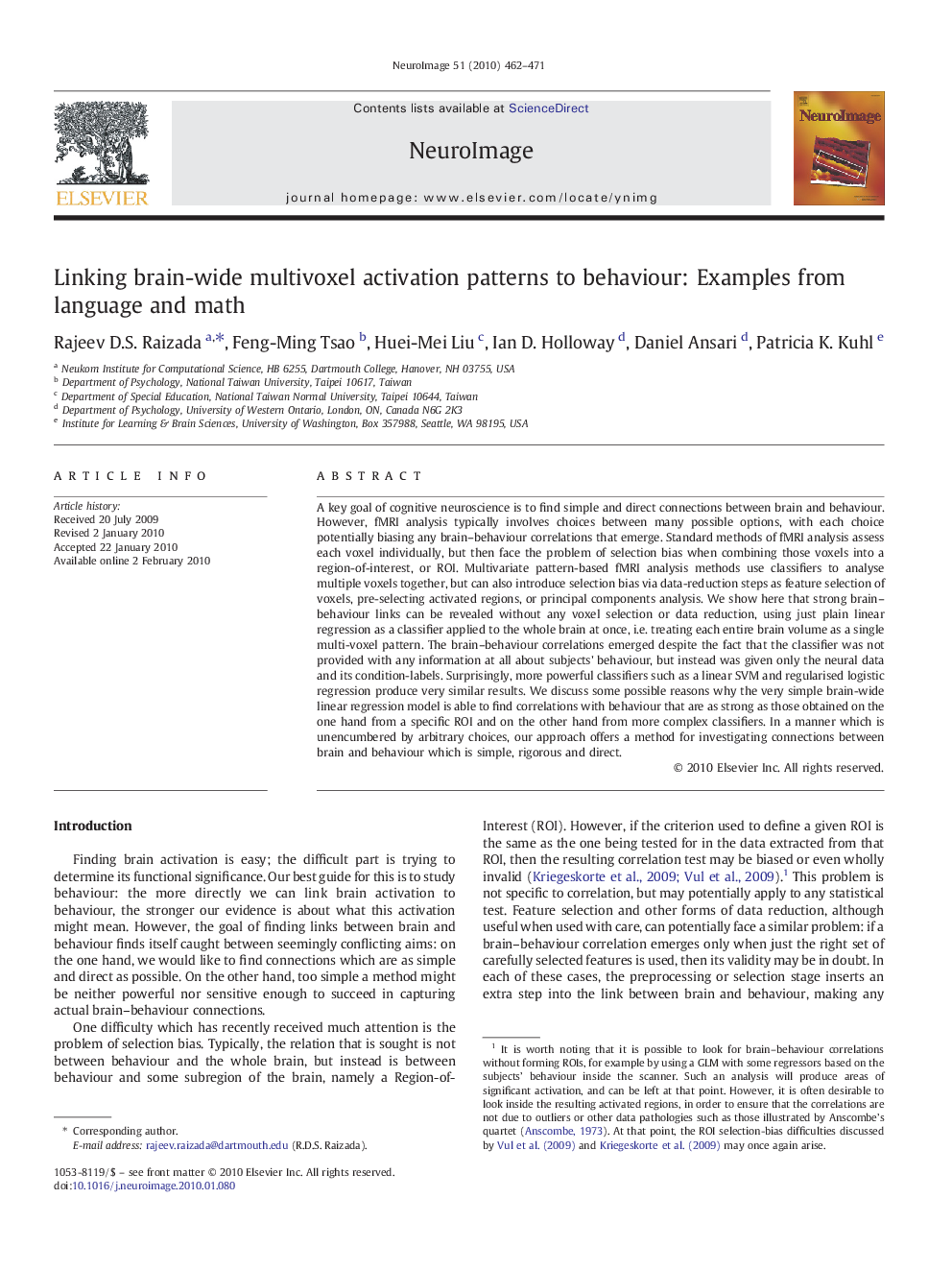| Article ID | Journal | Published Year | Pages | File Type |
|---|---|---|---|---|
| 6036183 | NeuroImage | 2010 | 10 Pages |
Abstract
A key goal of cognitive neuroscience is to find simple and direct connections between brain and behaviour. However, fMRI analysis typically involves choices between many possible options, with each choice potentially biasing any brain-behaviour correlations that emerge. Standard methods of fMRI analysis assess each voxel individually, but then face the problem of selection bias when combining those voxels into a region-of-interest, or ROI. Multivariate pattern-based fMRI analysis methods use classifiers to analyse multiple voxels together, but can also introduce selection bias via data-reduction steps as feature selection of voxels, pre-selecting activated regions, or principal components analysis. We show here that strong brain-behaviour links can be revealed without any voxel selection or data reduction, using just plain linear regression as a classifier applied to the whole brain at once, i.e. treating each entire brain volume as a single multi-voxel pattern. The brain-behaviour correlations emerged despite the fact that the classifier was not provided with any information at all about subjects' behaviour, but instead was given only the neural data and its condition-labels. Surprisingly, more powerful classifiers such as a linear SVM and regularised logistic regression produce very similar results. We discuss some possible reasons why the very simple brain-wide linear regression model is able to find correlations with behaviour that are as strong as those obtained on the one hand from a specific ROI and on the other hand from more complex classifiers. In a manner which is unencumbered by arbitrary choices, our approach offers a method for investigating connections between brain and behaviour which is simple, rigorous and direct.
Related Topics
Life Sciences
Neuroscience
Cognitive Neuroscience
Authors
Rajeev D.S. Raizada, Feng-Ming Tsao, Huei-Mei Liu, Ian D. Holloway, Daniel Ansari, Patricia K. Kuhl,
